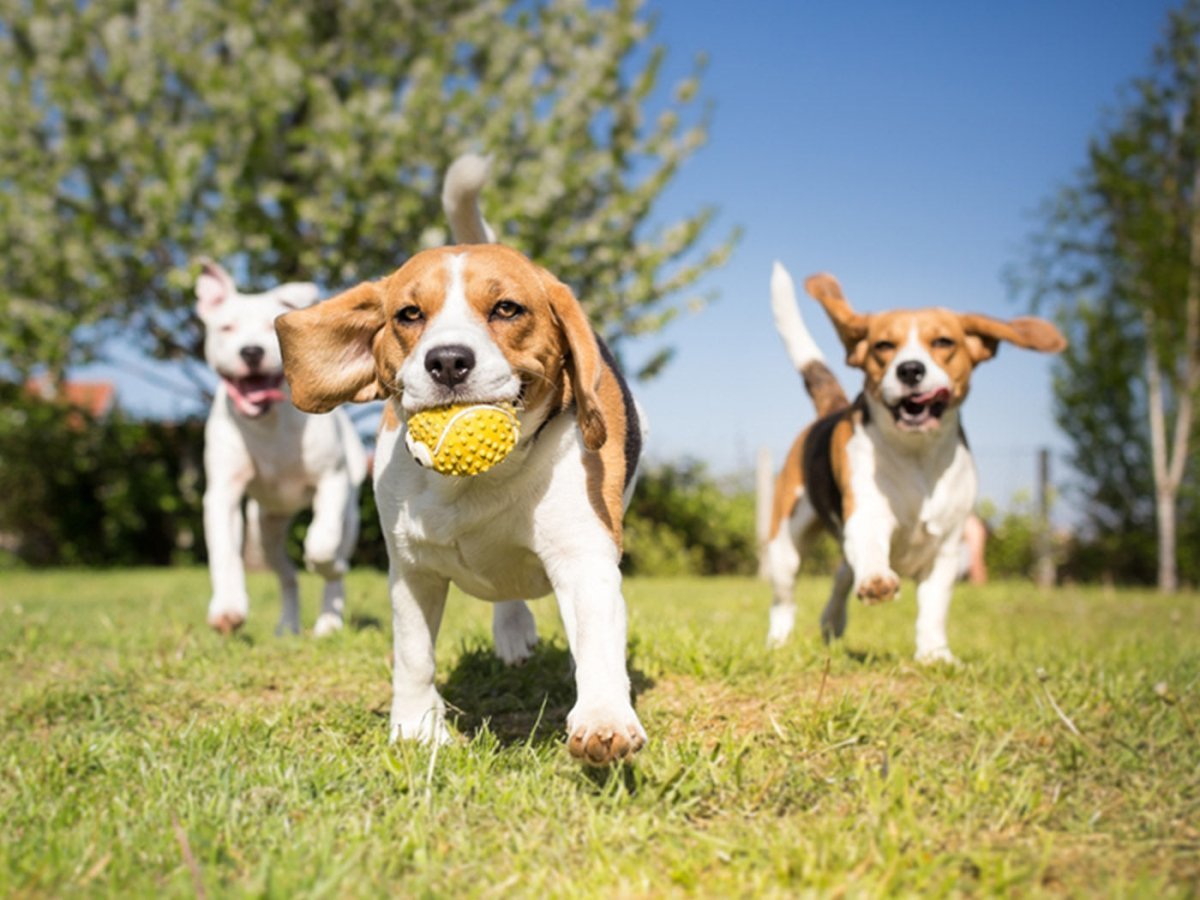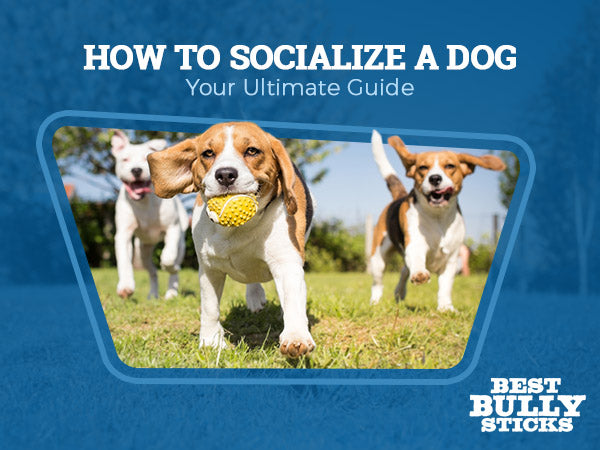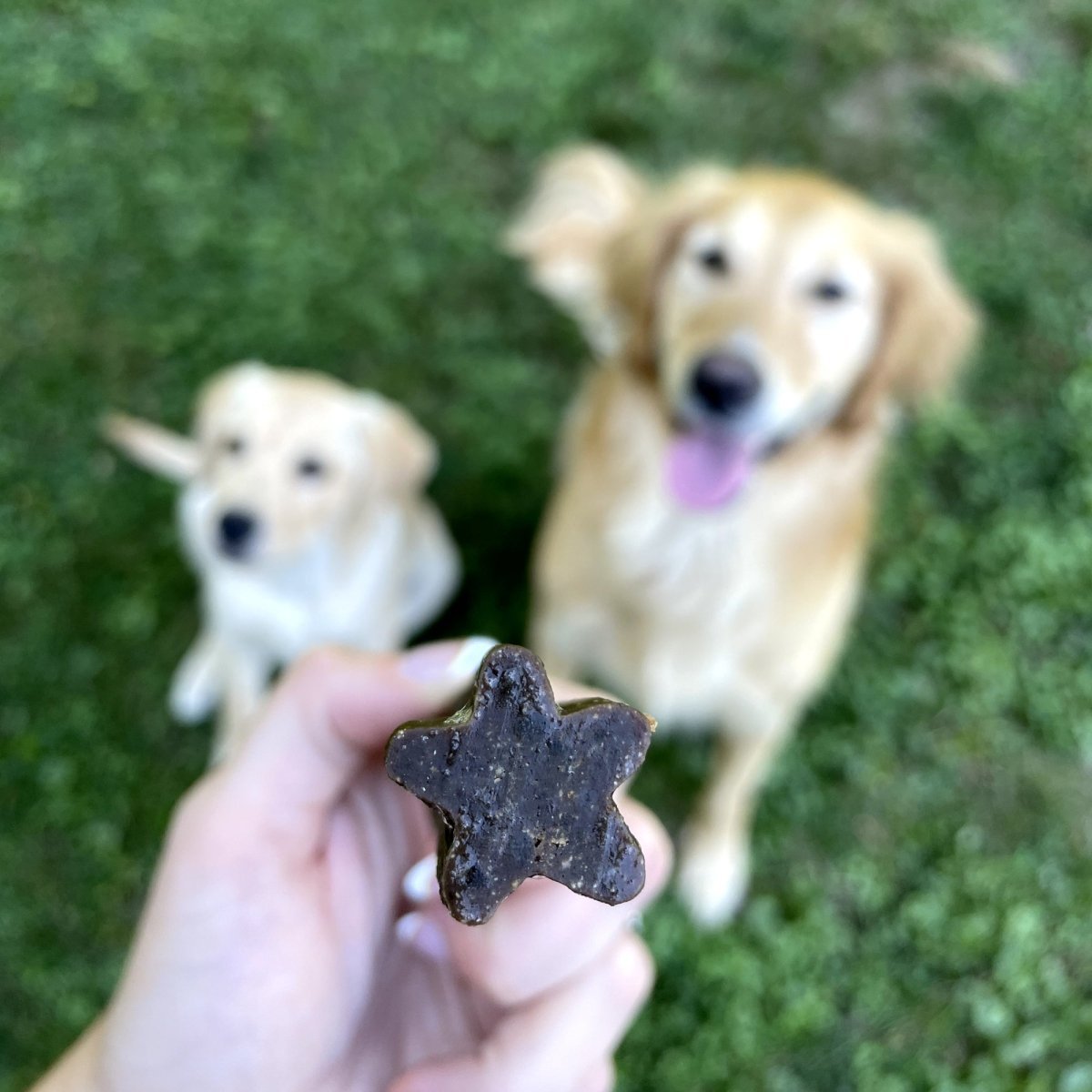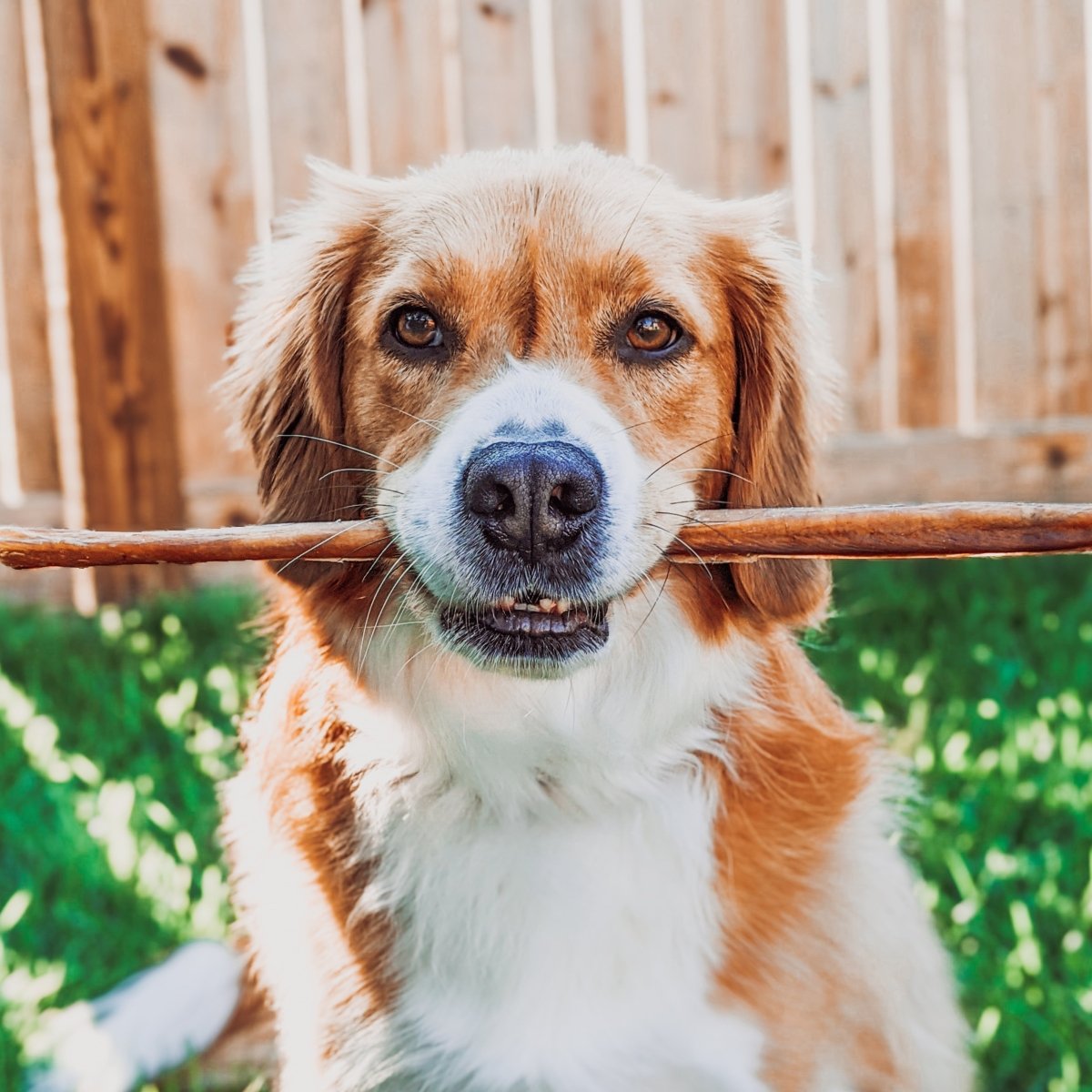

Did you know that socialization helps reduce stress and anxiety in your dog? It also makes many other facets of their and your life easy, from vet visits to bonding to their overall health. That’s why it’s important you regularly introduce your dog to other dogs and people, giving them time to play and interact.
But how’s the best way to introduce your dog to new friends? While you can help your dog de-stress with dog chews and reward good behavior after the fact with a high-value pig ear dog treat, there’s more to it than just giving your dog positive reinforcement afterwards.
Make Socialization Easier with Dog Chews
Here’s how you should approach socialization with puppies, adolescent dogs, seniors, and rescue dogs:
When it comes to raising a puppy, it can feel like a full-time job. You’re being woken up multiple times every night, they don’t do well being left alone, and they’re fearful of new things, dogs, and strangers. But it makes sense. Much of the world doesn’t make sense to your puppy. They’re like a baby, and they need guidance while moving through their new world.
The learning window for your dog needs to be addressed during their early life — from about one month of age to five months. Yet how do you properly train them during this time, helping them learn the ropes so they can socialize with ease?

A simple way to work with your puppy on comfort around others is to see how they react while they’re eating. A major issue for dogs is resource guarding — instances where your dog will either steal from others or become incredibly defensive of the things that are theirs.
A simple way to work on this is to regularly approach them while they’re eating (or playing with a new toy). For instance, if they’re at their feeding bowl, walk up behind them as they eat and lightly pet them on the butt. Similarly, if they’re chewing on a dog bone, try and reach out and take it from them, for a moment. If they react aggressively, act as if they hurt you. It might sound cruel, but it’s a simple way to show them that they shouldn’t hurt those who are nice to them — that they shouldn’t bite the hand that feeds.
Noise can be harmful to a puppy. It won’t harm their hearing, but it’s going to perturb them, causing discomfort that could lead to barking and reactivity. So take the time to get them used to the various things in your home and elsewhere. This includes the sound of music, your car, bicycles, skateboards, refrigerators, fans, and more.

Another key issue that extends to socialization is ensuring your dog is okay being alone. The truth is that your dog is going to be alone throughout the day, particularly while you work. If your dog is not okay with it, they’re going to get antsy, stressed, anxious, and upset. This can all lead to the emergence of bad behaviors, such as acting out aggressively to other small slights.
One of the simple ways to work on this is to work at crate training.
Crate training can be tough, especially with a puppy, but with patience it can make a big difference in your dog’s life. A good idea is to slowly get them used to their crate. It might not sound like much, but it’s a simple way to teach them their crate is a safe space, not a place of discomfort.
That time alone can, soon enough, become a place of comfort that will lead to better interactions with new people and dogs.
Similar to the issue of resource guarding, your dog might naturally be inclined to be aggressive to others, especially if they take them by surprise or invade their personal space. Help curtail this as soon as possible by working on positive reinforcement (and reminders). They act aggressively towards you? Act as if they hurt you. They snarl at another dog while out on a walk? Remove them from the situation until they calm down. Finally, start rewarding them when they act well. It will teach them there’s a benefit to being calm around others.
This is especially important once they start teething.
You need to get them used to being touched and groomed by others, whether they be dogs or people. Throughout the day, take time to pet their head, ears, belly, paws, and back. These are minor ways to get them used to being touched. Eventually, they’ll begin growing accustomed to it and will start welcoming it, seeing it as a sign of both comfort and love.

Socializing an adolescent and adult dog is all about creating routines. Dogs do best when they have a routine to work from, as it provides them with a means to understand their day-to-day life.
What does this involve? It’s a mixture of keeping them puppy-like and playful and giving them a routine they can understand, as well as regularly rewarding them for good behavior, like handing them bully sticks to gnaw on.
Reward Your Dog with Bully Sticks
One of the best things you can do is just introduce your dogs to other people and dogs, watching their behavior the entire time the interaction takes place. You’ll want to make sure they’re comfortable and aren’t showing signs of aggression. However, if they are showing aggression, don’t worry. That and barking are natural signs of discomfort in dogs. It doesn’t mean they want to cause harm— they just are unsure about what’s happening and want to keep themselves safe.
If you’re worried about those around you, remove your dog from the situation until they calm down and then try again. It requires patience, but it’s a worthwhile way to teach your dog.
Along with watching them while they play, you also need to create social time for your dog. This could be setting up a doggy playdate with a friend’s or neighbor’s dog or bringing your dog to the dog park. This time is for you and your dog to hang out with some other people. It’s also a great time to let your dog socialize and watch their behavior as they play. If they ever seem stressed or are getting a little snippy with other dogs, calmly call their name and take some time away from the pack to calm down.
They may say an old dog can’t learn new tricks, but they can. It just takes time and patience. So don’t feel overwhelmed if your dog ever seems uneasy or annoyed while trying to get them to meet new people and dogs. With some consideration, your senior dog can gradually get used to having fun with new people and dogs.

First off, make sure to get your dog outside on a regular basis. Similar to seniors and isolation, senior dogs that don’t socialize enough can gradually get serious behavioral and health issues. They need mental stimulation as much as physical exercise.
Best of all, by taking them outside on walks, they’re getting a mix of physical and mental activity. They’ll also be able to say hello to passing dogs, people, and outdoor animals.
Similarly, if your dog is up for it, it’s a good idea to take them to the dog park. While they won’t be able to play as gleefully as the other dogs around — especially the puppies — they’re more than likely going to show signs of their age.
But if they still don’t seem comfortable with that many dogs, slowly work up to it, which leads into your final means of senior socialization.
Make sure to have friends come over, too, along with their dogs — if they have them. It will get your dog used to having other people within their personal space. If they’re not used to it, they’re likely to get defensive. By regularly having others over to your place, you’ll get your dog used to seeing new faces, especially in a place they consider to be their safety zone. That can help towards softening their reactions outside of the house, too, as they’ll be more comfortable having other dogs and people approach them.

Lastly, what do you do when socializing a rescue dog? One of the biggest problems while working on socialization with a rescue dog is that they already have too many things they’re trying to get used to. This ranges from new sounds, climbing stairs, walking on a leash, hearing and seeing cyclists, and more — especially if they were never raised in a home and are only accustomed to living in the wild.
What you’re most likely going to see is behavior indicative of discomfort and fear:
You need to take your time. Don’t rush your dog into situations where it’s clear they’re uncomfortable. If they’re showing signs of discomfort, let up and give them space. You want to make sure they’re comfortable with whatever it is you want them to do, rather than simply trying to force them into it.
And while a little pushing can be useful in uncomfortable situations, you should always try to take your time, never pushing them too hard.
In addition to added fear and stress, your rescue dog might also show signs of aggression when interacting with new people and dogs. It’s not a sign that they’re naturally aggressive. It’s just a sign that they’ve been abused in the past, whether in a home or in the wild, and that they’re putting up a very strict guard. Signs to look for include:
If they’re showing the above signs, you should move far slower than if they’re showing apprehension. The problem with aggressive behavior is that it can cause fear in other people and dogs. It could even lead to them getting bit, too. Take your time and, most of all, consider seeking out professional help. A professional trainer will be able to work one-on-one with you and your dog, as well as in groups with other dogs and owners, to gradually take care of their behavioral issues.
Some simple tips to keep in mind, when it comes to socializing your dog, include:
Wondering how to socialize your dog? It all takes time. Don’t rush it! Take it one step at a time. With preparation and patience, you can effectively socialize your dog until they become comfortable meeting new people and dogs.
Comments will be approved before showing up.

Dental chews keep plaque in check and gums strong. Read here to learn about nature's toothbrush!

Single-ingredient dog chews and treats are crafted using only one whole food source!

Check out our guide on different types of chews to help you decide on the best chew for your dog!